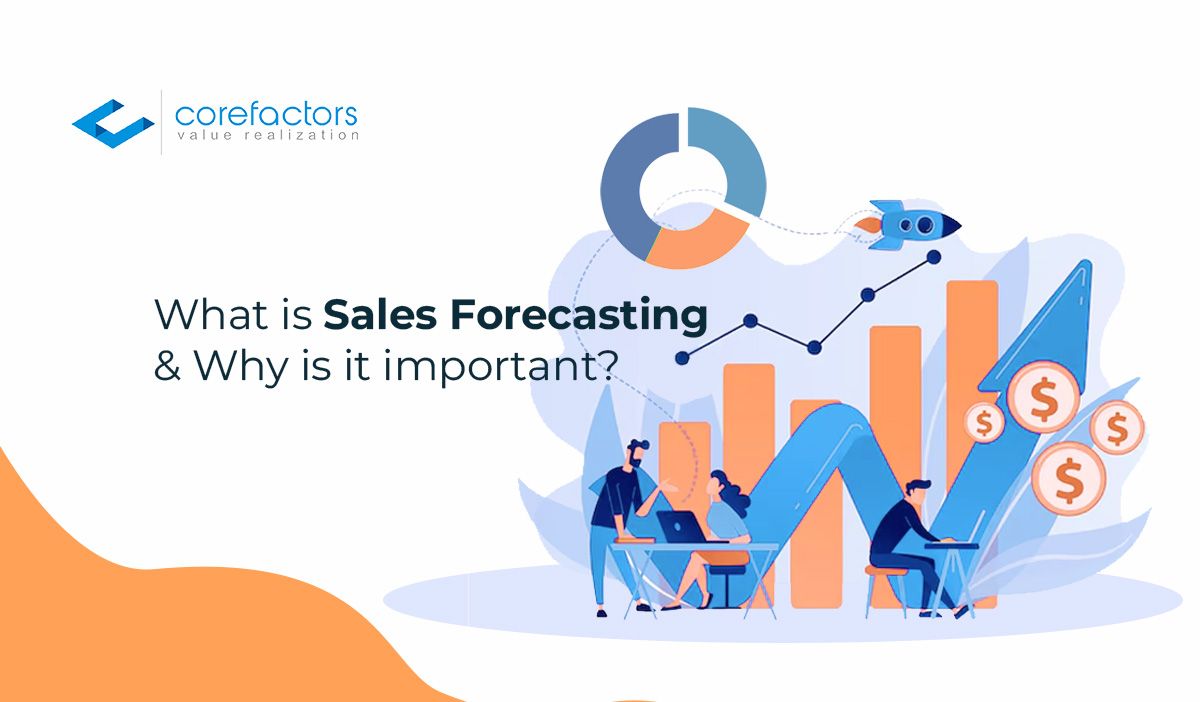Sales forecasting is the process of predicting future sales volumes or revenues based on historical data, market trends, and other relevant factors.
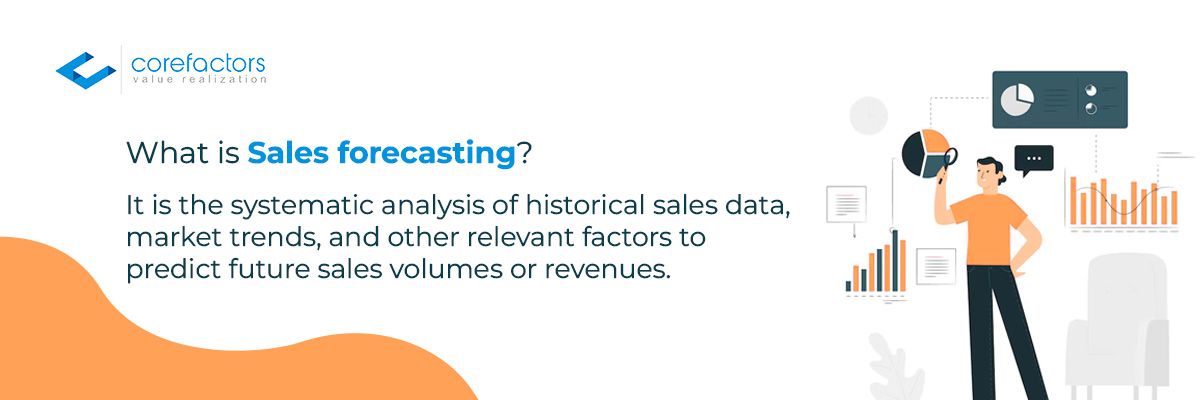
It involves analyzing past sales performance, market conditions, customer behavior, and other variables to estimate future sales outcomes accurately.
Sales forecasting serves as a strategic tool for businesses to anticipate demand, plan resources, set realistic goals, and make informed decisions to achieve their objectives.
By providing insights into potential revenue streams and market dynamics, sales forecasting enables businesses to allocate resources efficiently, optimize inventory levels, and develop targeted marketing strategies to drive sustainable growth and profitability.
This blog talks about different sales forecasting methodologies, challenges, and best practices as well as the importance of the practice.
What are Some Sales Forecasting Methodologies?
The methodologies mentioned below offer diverse perspectives on market dynamics, enabling businesses to capture nuances, detect patterns, and anticipate changes more accurately.
The methods leverage available data sources in unique ways, allowing businesses to extract actionable insights, validate forecasts, and mitigate risks effectively.
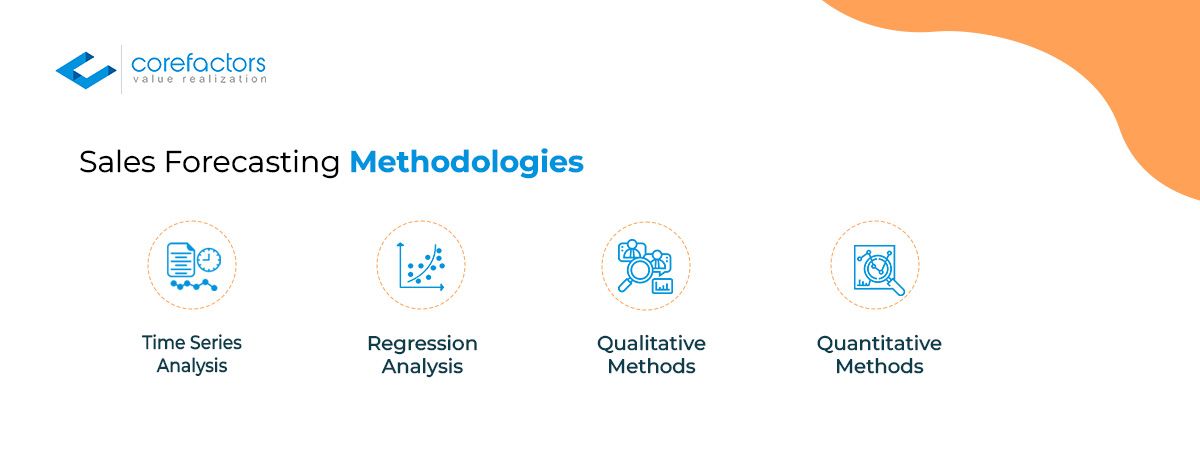
1. Time Series Analysis
This method examines historical sales data to identify recurring patterns, trends, and seasonality. By extrapolating past trends into the future, businesses can generate short-term forecasts with a high degree of accuracy.
Time series models such as moving averages, exponential smoothing, and autoregressive integrated moving averages (ARIMA) are widely used for forecasting sales in various industries.
2. Regression Analysis
Regression analysis explores the relationship between sales and key variables such as price, promotion, distribution, and consumer behavior.
By quantifying the impact of these factors on sales performance, businesses can develop predictive models to forecast future sales under different scenarios. Regression techniques such as linear regression, multiple regression, and logistic regression are employed to analyze complex data sets and derive actionable insights.
3. Qualitative Methods
These methods rely on expert judgment, market research, and subjective assessments to forecast sales in situations where historical data is limited or unreliable.
The Delphi method, market surveys, focus groups, and expert opinions are utilized to gather qualitative insights, validate quantitative forecasts, and capture intangible factors influencing consumer behavior. While qualitative methods may lack precision, they offer valuable insights into emerging trends, competitive dynamics, and customer preferences.
4. Quantitative Methods
Quantitative methods leverage advanced analytics, statistical modeling, and machine learning algorithms to analyze large datasets, detect patterns, and predict future outcomes with a high degree of accuracy.
Predictive analytics, artificial neural networks, decision trees, and ensemble methods are employed to forecast sales based on a combination of historical data, market variables, and external factors.
How do Businesses Benefit from Sales Forecasting?
Businesses can leverage a mix of forecasting methods to enhance forecast accuracy, gain deeper insights, and make more informed decisions to drive sustainable growth and competitive advantage.
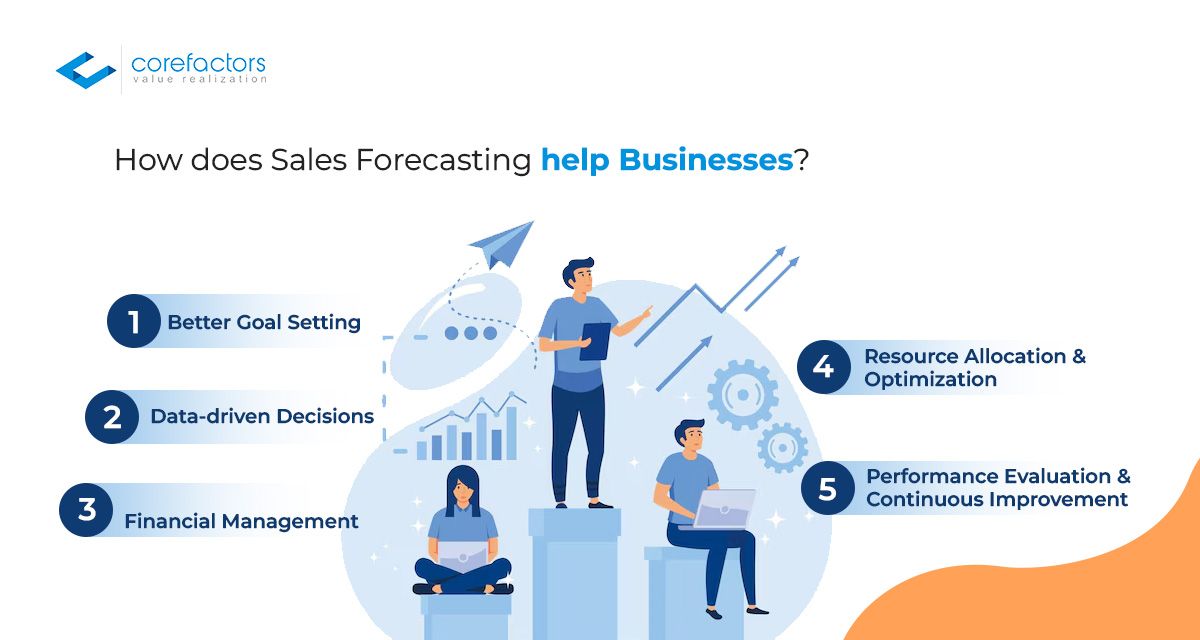
- Better Goal Setting
Sales forecasting enables businesses to set realistic sales targets based on historical performance, market trends, and growth projections.
By analyzing past sales data and customer interactions stored in the CRM system, businesses can identify patterns, assess market demand, and forecast future sales with greater accuracy.
These insights help the sales team set quarterly sales targets that align with business objectives and market dynamics, ensuring they are challenging yet attainable.
By leveraging the CRM data in their strategic planning processes, businesses can develop sales forecasts that support overarching goals such as revenue growth, market expansion, and customer perceived value and retention.
2. Resource Allocation and Optimization
Optimal resource allocation lies at the core of operational efficiency and cost-effectiveness.
Sales forecasting empowers businesses to allocate resources such as manpower, raw materials, and capital investment judiciously, thereby minimizing waste and maximizing productivity.
CRM solutions with sales forecasting abilities help your sales reps identify high-value lead sources and keep track of all sales opportunities. Identifying these opportunities helps allocate funds to relevant sales activities.
Proper resource allocation plays a crucial role in company growth and profitability.
3. Data-driven Decisions
Sale Forecasting relies heavily on data. The data that the forecast churns out plays a central role in any decisions taken to run the business.
Understanding customer behavior and market trends is just the iceberg of the unchartered world that sales forecasting opens up.
Having an estimate of qualitative matters such as features customers might need in the future, helps in making product-related decisions. These are some steps businesses can take towards a brighter future.
4. Performance Evaluation and Continuous Improvement
Sales forecasting enables businesses to monitor progress toward sales goals in real time and make timely adjustments to strategies as needed. By tracking key performance indicators (KPIs) and sales metrics in the CRM system, businesses can identify bottlenecks, capitalize on opportunities, and optimize sales processes for maximum efficiency and effectiveness.
Clear goals, as mentioned in the first point, also help leaders provide their team with specific instructions on how to achieve them. Increased clarity results in better work output.
5. Financial Management
Cash flow is the lifeblood of any business, driving day-to-day operations and strategic investments.
Sales forecasting plays a pivotal role in cash flow planning, allowing businesses to anticipate revenue streams, plan expenses, and mitigate financial risks.
The alignment of sales projections with cash flow forecasts helps maintain adequate liquidity, secure financing and enables businesses to weather economic uncertainties with confidence.
What are Some Challenges and Best Practices for Sales Forecasting?
Mentioned below are some obstacles businesses might face while sales forecasting. The points also mention solutions to these challenges.
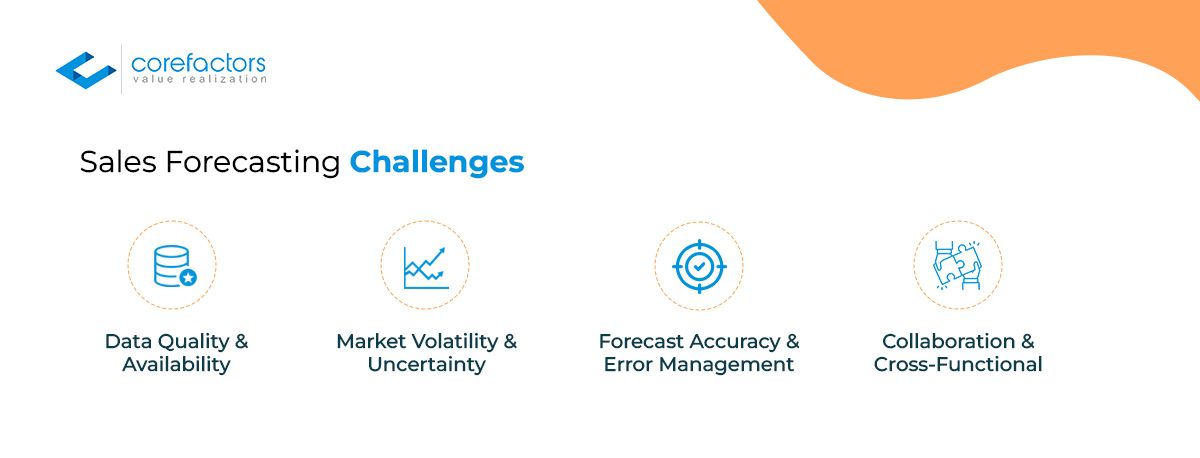
- Data Quality and Availability
One of the primary challenges in sales forecasting is the availability and quality of data. Inaccurate or incomplete data can lead to biased forecasts, misleading insights, and suboptimal decision-making.
Businesses should invest in data collection, cleansing, and validation processes, ensuring the integrity and reliability of their data sources. Corefactors has an in-built data validation system in place.
By leveraging data analytics tools and technologies, organizations can uncover hidden patterns, identify outliers, and extract actionable insights from disparate data sets.
2. Market Volatility and Uncertainty
Navigating through volatile market conditions and economic uncertainties poses a significant challenge for sales forecasting.
Rapid changes in consumer preferences, competitive dynamics, and regulatory environments can disrupt demand patterns and render traditional forecasting models obsolete.
Businesses can address this challenge by adopting agile forecasting methodologies, scenario planning techniques, and adaptive forecasting models capable of capturing nonlinear relationships and dynamic market trends.
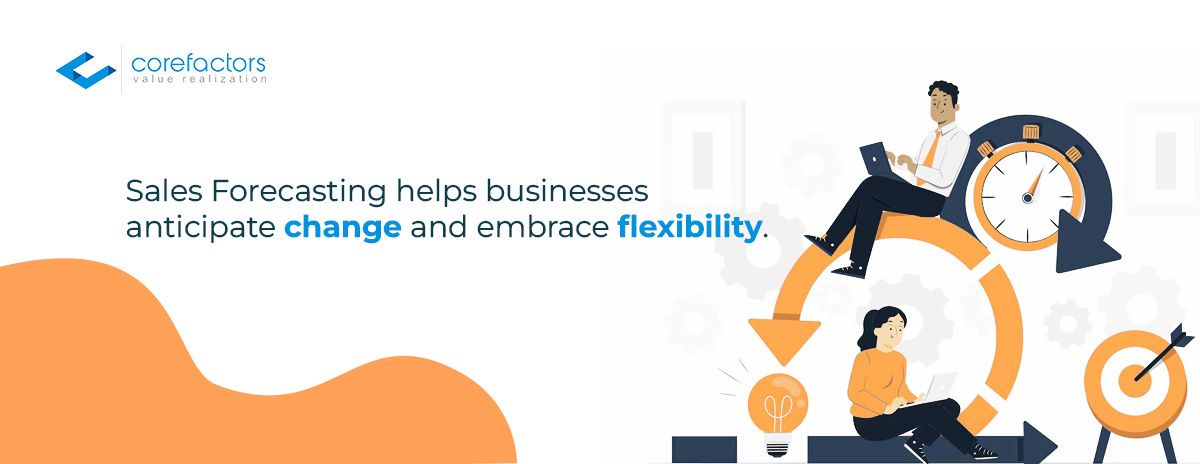
Embracing flexibility, resilience, and foresight enables one to
- Mitigate risks
- Anticipate changes
- Capitalize on emerging opportunities in turbulent times
3. Forecast Accuracy and Error Management
Achieving forecast accuracy is a perennial challenge for businesses, given the inherent complexity and uncertainty of market dynamics.
Forecasting errors can stem from various sources, including data inaccuracies, model assumptions, and external shocks.
Businesses should adopt a holistic approach to error management, incorporating feedback loops, model recalibration, and continuous validation processes into their forecasting workflows.
By embracing a culture of learning, experimentation, and adaptation, they can refine their forecasting models, reduce errors, and improve decision-making over time.
4. Collaboration and Cross-Functional Alignment
Effective sales forecasting requires seamless collaboration and alignment across different departments, including sales, marketing, finance, and operations.
Siloed organizational structures, conflicting priorities, and communication barriers can impede the accuracy and reliability of sales forecasts.
To foster cross-functional alignment, businesses should establish clear communication channels, set common goals, and encourage knowledge sharing among teams. Using a RevOps-enabling CRM like Corefactors helps this cause.
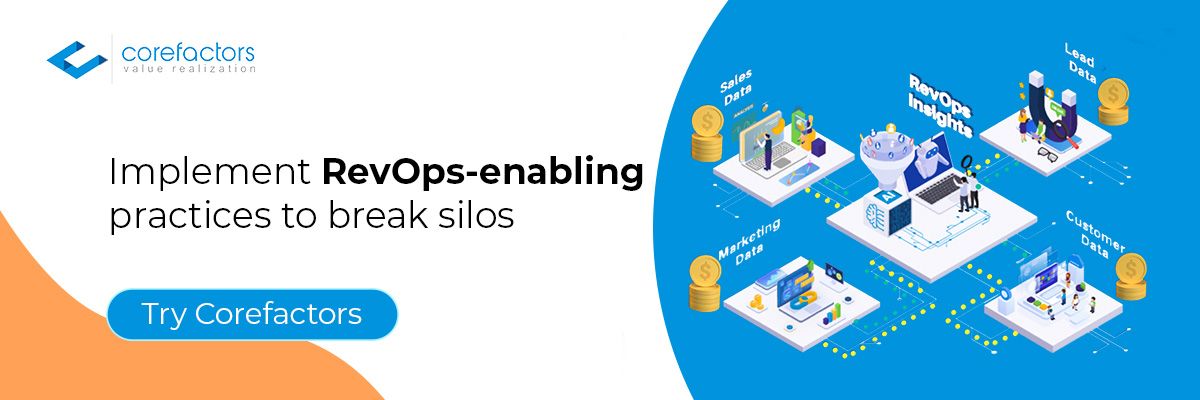
Conclusion
Sales forecasting is a fundamental aspect of business management, providing valuable insights into future sales trends and guiding strategic decision-making processes.
By understanding the importance of sales forecasting and adopting effective forecasting techniques, businesses can gain a competitive edge and stay ahead.
A CRM platform like Corefactors enables users to be equipped with sales forecasting tools.
Frequently Asked Questions (FAQs)
What is Sales Forecasting?
Sales forecasting is the process of predicting future sales volumes or revenues based on historical data, market trends, and other relevant factors.
What are methods of Sales Forecasting?
Time series analysis, Regression analysis, Qualitative methods, and Quantitative methods are among the most commonly used sales forecasting methods.
Why is a Sales Forecast important?
Sales Forecasting helps businesses with better goal setting, financial management, taking data-driven decisions, resource allocation and optimization, performance evaluation, and continuous improvement.
What are some Sales Forecasting challenges?
Challenges include data quality and availability, market volatility and uncertainty, getting accurate forecast and error management, and achieving cross-functional alignment among teams.

